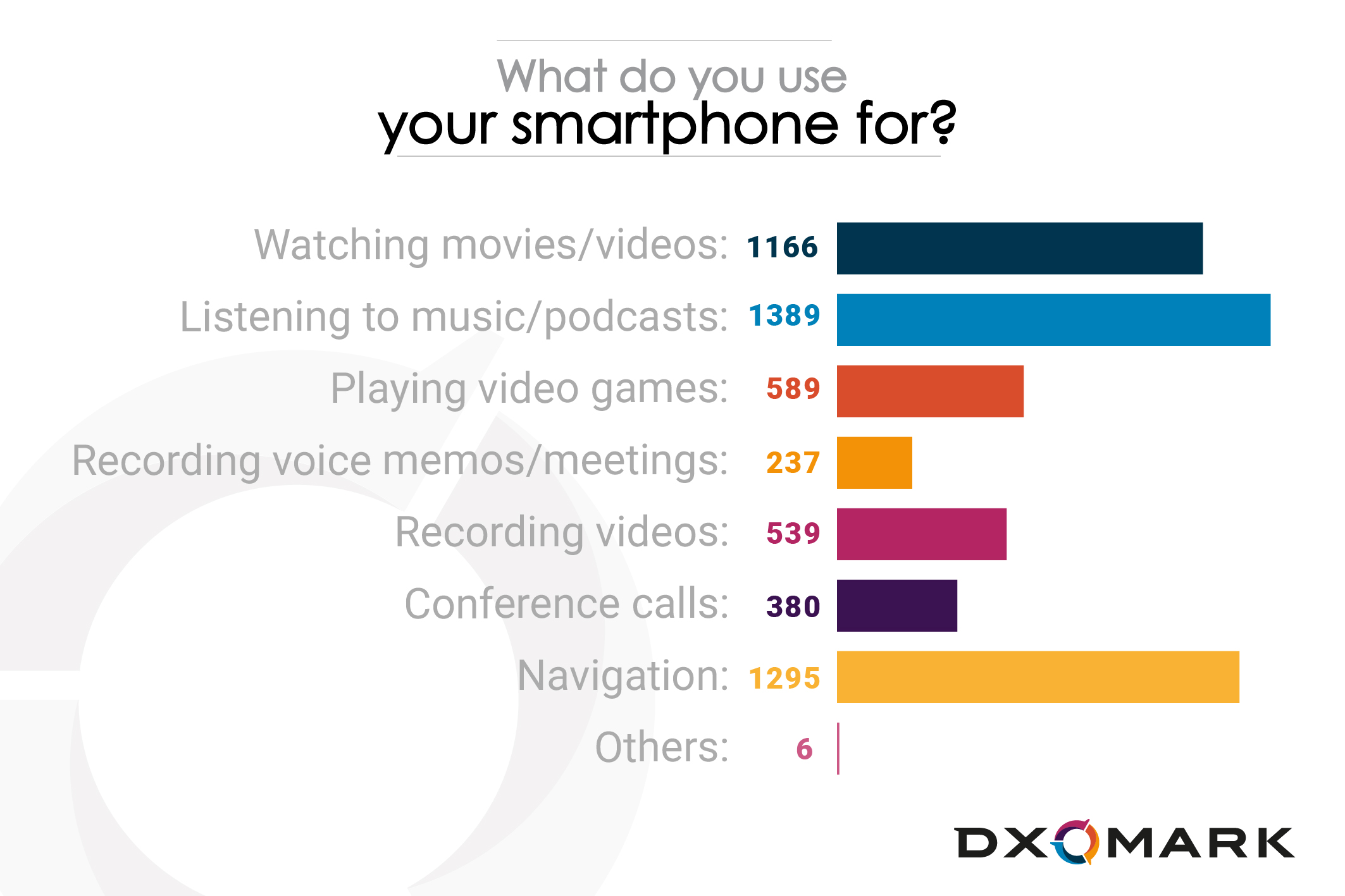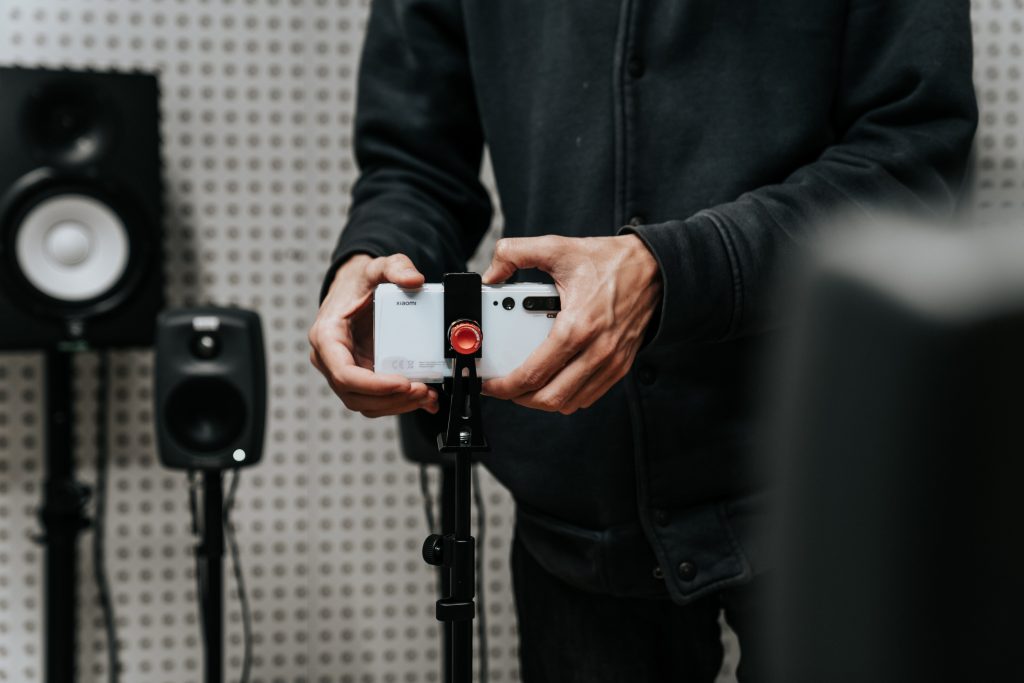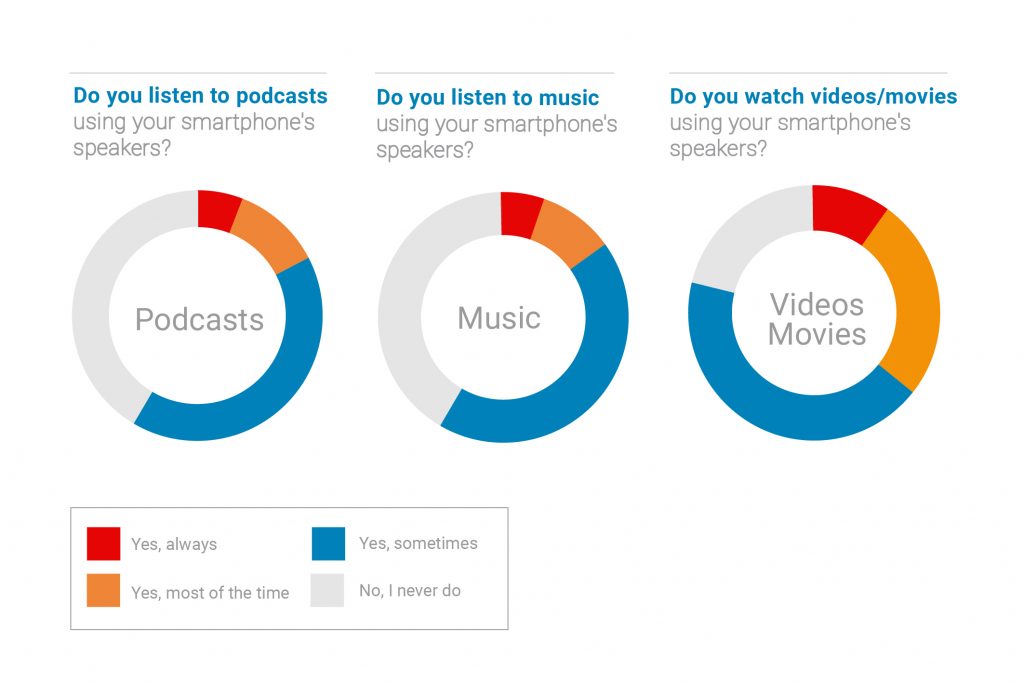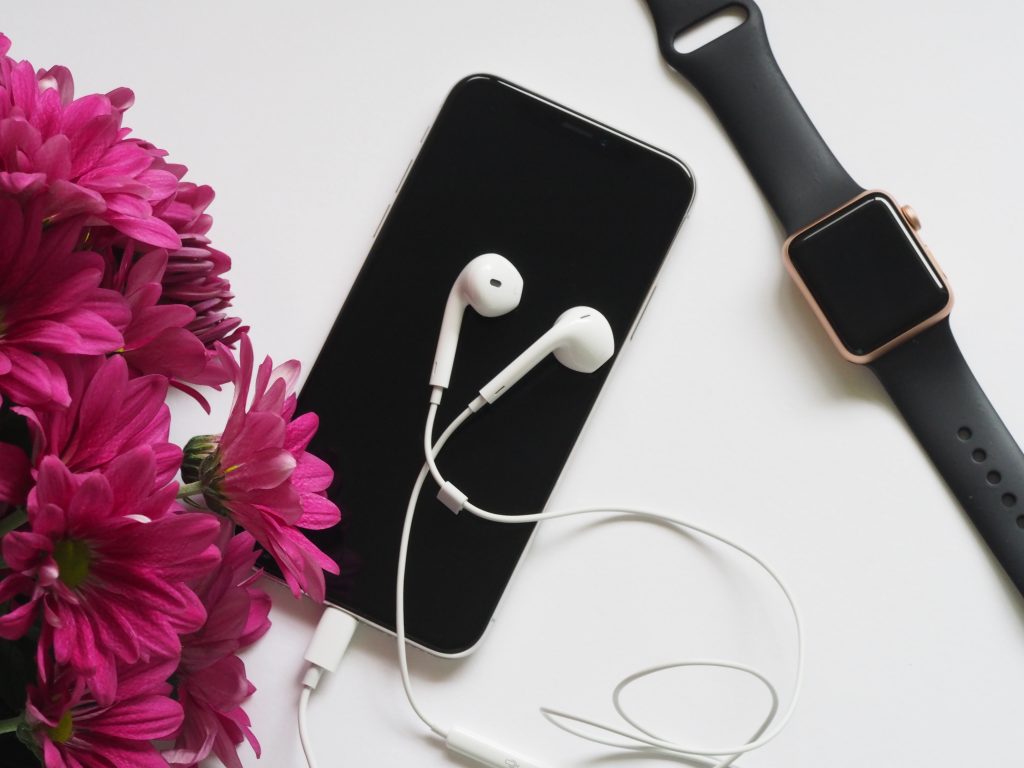These days smartphone makers like to boast about their devices’ big screens and the number and quality of cameras their particular models have. But one thing that often gets overlooked is the sound quality. That’s beginning to change.
Consumer awareness is slowly beginning to increase when it comes to audio quality on a phone. Some smartphone makers are listing the number of speakers, the number of microphones, as well as the technologies they embed in their devices, such as Dolby, DTS:X, Dirac Research, and AKG. After all, what good is the video of your child’s first piano recital or of your favorite band in concert if the sound is distorted? What’s the point of having the most advanced smartphone if your voice is unintelligible during a meeting, a video, or a voice memo?

We recently asked you, our readership, to take a short informal online survey about how you use your smartphone’s built-in audio equipment. We were happy to hear back from so many of you! We received 1,550 responses to our 7-question survey. So let’s take a closer look at what you told us, starting with the importance of the built-in microphone quality in a smartphone and how our DXOMARK Audio protocol evaluates it.
Technology in smartphone microphones has evolved since the first cellphones. Originally, cellphones were equipped with a single microphone to transmit the user’s voice during a call. Nowadays, smartphones typically carry three or four MEMS microphones (microelectromechanical systems— that is, tiny electret microphones that require very little power to function, and occupy very little space). Sometimes there are even more microphones in a smartphone, in order to deliver stereo recordings, cancel background noise when necessary, or even zoom in on desired sounds.

Our survey revealed that out of 1550 participants, about a third use their smartphone for making videos, a quarter for conference calls, and 15.3% for recording voice messages or meetings (besides making phone calls, of course).
Despite a large variety of external microphones on the market, either as standalone devices or included in earbuds/headphones, the proportion of people using them remains extremely low. This is probably because of the impracticality of catching sudden or immediate moments with an external microphone.
Bypassing the built-in microphone is often not an option, especially when trying to record an unexpected scene or a group or conference calls. So it was not surprising that 93% of the participants said that they generally use the built-in microphone when calling or recording voice messages, and 95% when filming a video. With few options for controlling the recording quality, it’s essential to evaluate the native (built-in) recording quality of a smartphone, and our audio protocol gives substantial importance to the evaluation of what we call the Recording sub-score, which is divided into six sub-categories — timbre, spatial, dynamics, volume, artifacts and background — and is based upon numerous real-life use cases.

Along with the launch of our audio quality benchmark in October 2019, we published a paper outlining the specificities of the recording part of our audio testing protocol. Digging a little deeper, we recently disclosed details about our homemade — or more accurately “lab made” — audio clips that we use for evaluating the recording performance of each tested device. At the end of that article, we left you to guess which among these smartphone recordings of the same audio clip was done by the top-scoring device for recording, by a device that was somewhere in the middle of the pack, and by a third device that was among the least capable phones we had tested at that time.
And the answers are (drumroll):
Device n°1: Samsung Galaxy S20 Ultra
Device n°2: Honor V30 Pro
Device n°3: Redmagic 3S

Returning to our survey, let’s check out the use cases involving the speakers — and yes, we’re kind of playing it fast and loose with the plural, as even nowadays, we still come across single-speaker devices occasionally. Listening to music and/or podcasts took first place, with nearly 90% of the votes, while watching movies/videos comes in only third, after GPS navigation. Finally, over a third of participants play video games on their smartphones.
Arguably, all those applications can imply the use of earbuds, headphones, or even separate speakers. But even with all these options available, more than half of the participants declared that they listened to podcasts and even music using their smartphone’s speakers. Watching videos appears to be even more “built-in speaker-compliant,” with close to 80% of the votes.

In our playback performance protocol, we focus on the built-in speakers, with five sub-categories (timbre, spatial, dynamics, volume and artifacts), and rely yet again on numerous real-life use cases such as listening to different genres of music, watching videos, or playing games. We now use our brand new anechoic chamber to test our speakers.

DXOMARK’s Audio protocol does not evaluate the quality of a device’s 3.5mm output. First, because most smartphone analog outputs offer excellent results, with acoustic differences indistinguishable by the majority of human ears, as explained in this excellent GSM Arena article; and second, for obvious manufacturing-related reasons, as the once-almighty headphone jack lost its ubiquity in the smartphone world.
Still, out of audio curiosity, we asked the participants to tell us their opinion about the presence of a 3.5mm output on a smartphone: 41.7% of respondents said it was essential for them to have one, 38.9% said it was preferable, 17.2% felt it was unimportant, and 1.3% declared it was a hindrance.
Here are the final and complete results of our survey. We’ll talk more soon about the history and the evolution of smartphone audio — until then, stay safe!



DXOMARK encourages its readers to share comments on the articles. To read or post comments, Disqus cookies are required. Change your Cookies Preferences and read more about our Comment Policy.